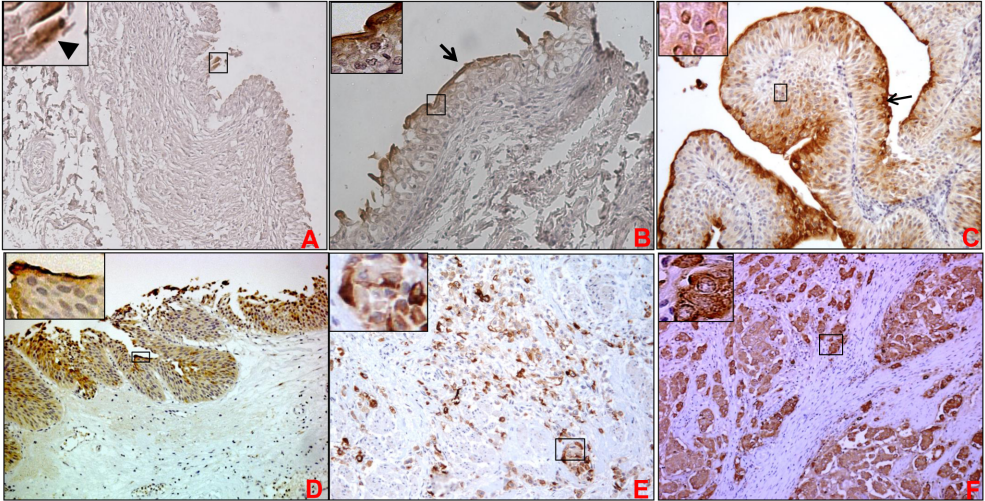Cat. #152814
Anti-MUC1 [HMFG2]
Cat. #: 152814
Sub-type: Primary antibody
Unit size: 100 ug
Availability: 3-4 weeks
Target: Mucin1 (MUC1)
Class: Monoclonal
Application: ELISA ; FACS ; IHC ; IP ; Fn ; WB
Reactivity: Human
Host: Mouse
£300.00
This fee is applicable only for non-profit organisations. If you are a for-profit organisation or a researcher working on commercially-sponsored academic research, you will need to contact our licensing team for a commercial use license.
Contributor
Inventor: Joyce Taylor-Papadimitriou ; Joy Burchell
Institute: Cancer Research UK, London Research Institute: Lincoln's Inn Fields
Tool Details
*FOR RESEARCH USE ONLY (for other uses, please contact the licensing team)
- Name: Anti-MUC1 [HMFG2]
- Alternate name: ADMCKD, ADMCKD1, Breast carcinoma associated antigen DF3, Breast carcinoma-associated antigen DF3, CA 15-3, CA15 3, CA15 3 antigen, CA15.3, Cancer antigen 15-3, Carcinoma associated mucin, Carcinoma-associated mucin, CD 227, CD227
- Cancer type: Ovarian cancer, Colorectal cancer, Breast cancer
- Cancers detailed: Breast cancer;Broadly Applicable;Colon;Ovarian
- Research fields: Cancer;Cell biology;Cell signaling and signal transduction
- Clone: HMFG2
- Tool sub type: Primary antibody
- Class: Monoclonal
- Conjugation: Unconjugated
- Strain: Balb/c
- Reactivity: Human
- Host: Mouse
- Application: ELISA ; FACS ; IHC ; IP ; Fn ; WB
- Description: Monoclonal antibody which detects several glycoforms of MUC1, a marker of breast cancer. Background and Research Application Mucin-1 (MUC1) is a membrane protein present on normal human breast epithelial cells and cell lines derived from breast carcinomas. Human MUC1 is also localised on the surface of the human milk fat globule. MUC1 is a differentiation marker and specific breast epithelial marker in normal and neoplastic mammary development and can be used to monitor response to breast cancer treatment and disease recurrence. Lower levels over time may be indicative of a positive response to treatment. It is upregulated in the lactating breast and in carcinomas. MUC1 also is involved in tumour progression and transcription through regulation of p53. Anti-MUC1 can react with unglycosylated MUC1, and several glycoforms.
- Immunogen: Milk fat globule followed epithelial cells cultured from milk
- Immunogen uniprot id: P15941
- Isotype: IgG1 lambda
- Myeloma used: P3/NS1/1-Ag4.1
Target Details
- Target: Mucin1 (MUC1)
- Target background: Monoclonal antibody which detects several glycoforms of MUC1, a marker of breast cancer. Background and Research Application Mucin-1 (MUC1) is a membrane protein present on normal human breast epithelial cells and cell lines derived from breast carcinomas. Human MUC1 is also localised on the surface of the human milk fat globule. MUC1 is a differentiation marker and specific breast epithelial marker in normal and neoplastic mammary development and can be used to monitor response to breast cancer treatment and disease recurrence. Lower levels over time may be indicative of a positive response to treatment. It is upregulated in the lactating breast and in carcinomas. MUC1 also is involved in tumour progression and transcription through regulation of p53. Anti-MUC1 can react with unglycosylated MUC1, and several glycoforms.
Applications
- Application: ELISA ; FACS ; IHC ; IP ; Fn ; WB
Handling
- Format: Liquid
- Concentration: 1 mg/ml
- Unit size: 100 ug
- Storage buffer: PBS with 0.02% azide
- Storage conditions: Store at -20° C frozen. Avoid repeated freeze / thaw cycles
- Shipping conditions: Dry ice
Related Tools
- Related tools: Anti-MUC1 [HMFG1] ; Anti-MUC1, Recombinant [HMFG2]
References
- Mei et al. 2020. Cancer Med. 9(2):640-652. PMID: 31800160.
- Yoshimura et al. 2019. Sci Rep. 9(1):16641. PMID: 31719620.
- Guedan et al. 2019. Mol Ther Methods Clin Dev. 12:145-156. PMID: 30666307.
- Balmaa et al. 2018. Molecules. 23(11):. PMID: 30380716.
- Nair et al. 2018. Indian J Dermatol. 63(5):440-442. PMID: 30210176.
- Kaur et al. 2014. PLoS One. 9(3):e92742. PMID: 24671186.
- Altered expression of transmembrane mucins, MUC1 and MUC4, in bladder cancer: pathological implications in diagnosis.
- Schettini et al. 2012. Cancer Immunol Immunother. 61(11):2055-65. PMID: 22543528.
- Intratumoral delivery of CpG-conjugated anti-MUC1 antibody enhances NK cell anti-tumor activity.
- Wilkie et al. 2008. J Immunol. 180(7):4901-9. PMID: 18354214.
- Retargeting of human T cells to tumor-associated MUC1: the evolution of a chimeric antigen receptor.
- Sakurai et al. 2007. Eur J Histochem. 51(2):95-102. PMID: 17664159.
- Differential expression of the glycosylated forms of MUC1 during lung development.
- Schroeder et al. 2001. J Biol Chem. 276(16):13057-64. PMID: 11278868.
- Transgenic MUC1 interacts with epidermal growth factor receptor and correlates with mitogen-activated protein kinase activation in the mouse mammary gland.
- Burchell et al. 1993. Epithelial Cell Biol. 2(4):155-62. PMID: 7505698.
- Effect of modification of carbohydrate side chains on the reactivity of antibodies with core-protein epitopes of the MUC1 gene product.
- Taylor-Papadimitriou et al. 1981. Int J Cancer. 28(1):17-21. PMID: 7309278.
- Monoclonal antibodies to epithelium-specific components of the human milk fat globule membrane: production and reaction with cells in culture.





